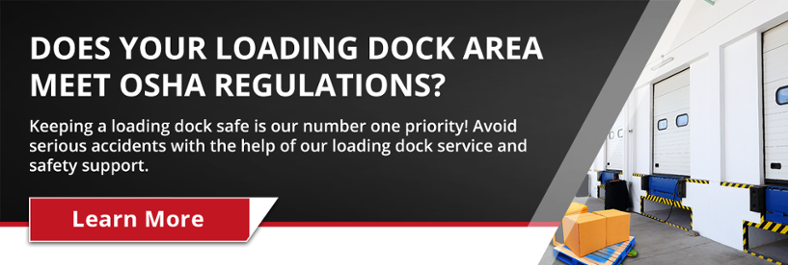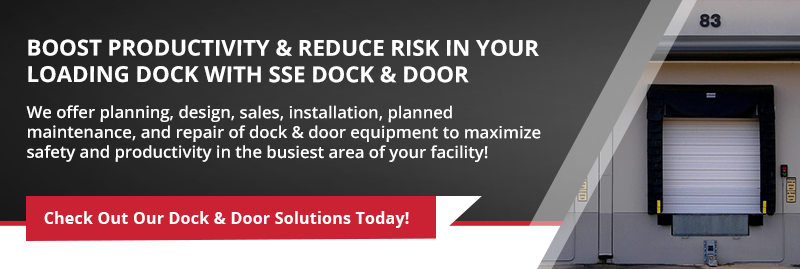As a warehouse manager, you probably spend a lot of time in and around your loading dock. After all, this area is typically the hub of all warehouse activities with vehicles, inventory, and personnel constantly moving in and out.
To ensure your loading dock and door area is safe and running at maximum efficiency, you need to know about the tools, processes, and potential hazards that can affect it. That’s why we’ve outlined the most important terms you should know when managing a warehouse with a bustling loading dock!
Loading Dock and Door Terms
Your loading dock drives revenue for your entire warehouse, so it is especially important that this area is always safe, efficient, and properly maintained.
Here are some common loading dock terms that can help you keep this area is fully functional and operating at max capacity.
Loading dock
A loading dock is a recessed bay in a warehouse or facility where trucks are loaded and unloaded with inventory, which can be located on the building’s exterior, flush with the building envelope, or fully enclosed.
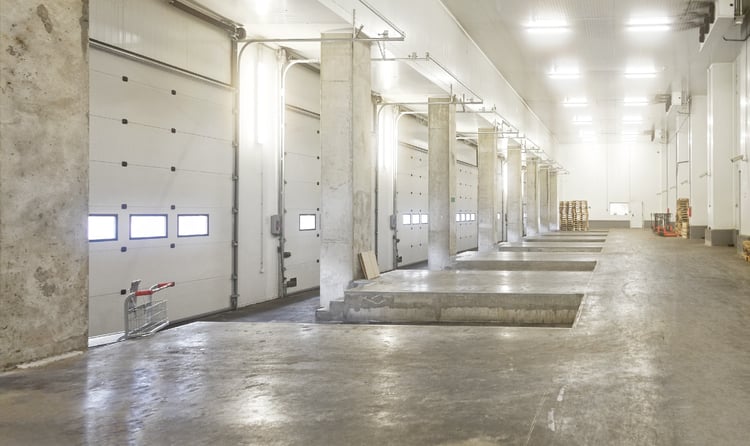
High-speed doors
A high-speed door is a type of industrial dock door that increases productivity, safety, energy efficiency, and security in your warehouse.
High-speed loading dock doors tend to require less maintenance than other types of industrial doors and are available in many varieties, including roll-up and sectional doors. This type of loading dock door is ideal for warehouses that are looking to stay climate-controlled or minimize ongoing maintenance.
Overhead doors
An overhead door is a type of industrial dock door that is made up of sectional doors that move within tracks. They typically include insulated panels and operational systems, and are efficient for most standard loading docks.
Loading dock leveler
A loading dock leveler is a piece of steel that creates a bridge between a warehouse building and the bed of a truck. Your loading dock will not perfectly match the height of every truck that enters it, which can create gaps that are a tripping hazard for workers loading or unloading inventory.
Loading dock levelers effectively close these gaps, keeping your employees and inventory safe no matter what size truck is being utilized.
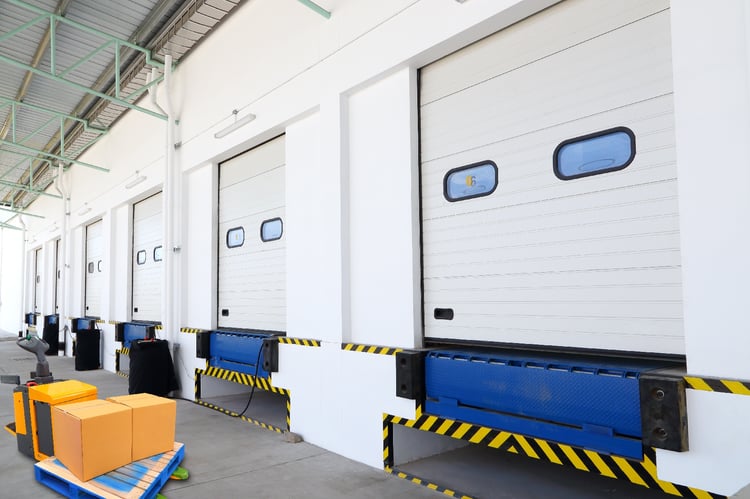
There are a few types of dock levelers, including:
- Hydraulic Dock Levelers
- Mechanical Dock Levelers
- Vertical Dock Levelers
- Air Dock Levelers
Loading dock leveler capacity
A typical loading dock leveler, including pit-mounted loading dock levelers, can hold 25,000 to 80,000 lbs of capacity. This means if your transport vehicle is within that weight range, then the dock leveler can support it.
Dock bumper
A dock bumper is used to prevent damage to loading dock equipment, warehouse walls, vehicles, and trailers. Sometimes referred to as truck dock bumpers or dock pads, they are typically made of rubber for their high resistance to impact and environmental wear and tear from wind and rain.
Dock lip
A dock lip creates a positive stop for forklift trucks, preventing them from accidentally or prematurely driving over the dock’s edge when loading or unloading. Once it is safe to depart from the loading dock, a dock lip will automatically disappear when the leveler descends onto a truck, offering a smooth, safe transition between the platform and the lip where warehouse workers can load and unload assets.
Dock seal
A dock seal is a barrier between the opening of the loading dock door and the surface of the backed-in trailer when loading or unloading. Loading dock seals are designed to create a barrier that keeps outdoor weather, bugs, dirt, rodents, and unwanted pedestrian traffic out of your warehouse.
This also keeps climate-controlled air inside, making your warehouse more energy efficient and providing comfortable working conditions for your employees.
Dock shelter
A dock shelter is the flexible enclosure that allows a trailer to pull under and into the opening of a loading dock while the surface of the fabric forms a contact barrier around the rear of the trailer.
Loading dock shelters fit more loosely around the trailer than loading dock seals, so they tend to last longer and be more forgiving to truck drivers.
Edge of Dock leveler (EOD)
The EOD bridges the gap from the edge of a loading dock area to a truck, trailer, or ramp. They are fixed to the loading dock and ideal for use when trucks are backing up to a loading area.
Dock lights
Dock lights ensure that operators can see while they’re inside dark trailers to load and unload inventory safely. Keep in mind that even if your warehouse only operates during daylight hours, you still need to have proper lighting in and around your dock area. This warns pedestrians walking around your warehouse area that this is a zone for loading and unloading trucks so they can use caution.
Dock safety gates
Dock safety gates guard the pedestrian walkways in and around the loading dock and door area so pedestrians passing by do not walk through a loading and unloading zone that could potentially be dangerous.
Wheel chock
A wheel chock is a sturdy wedge placed closely against a vehicle's wheels to prevent it from accidentally moving when assets are being loaded and unloaded in the loading dock.
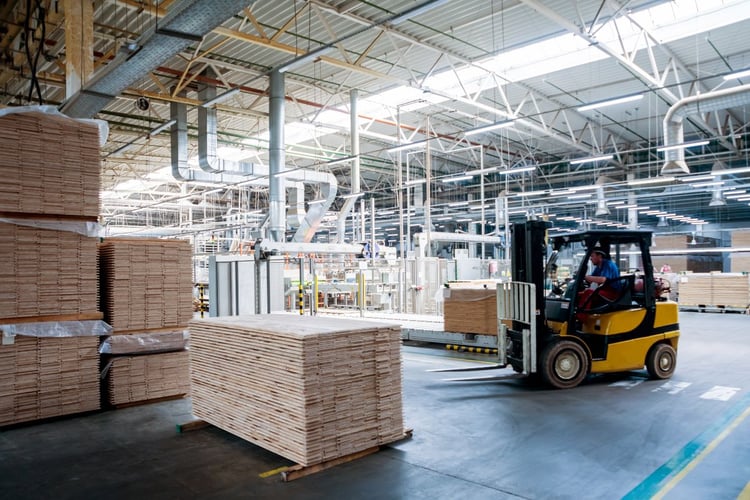
Communication lights
This is a system of flashing lights that informs truck drivers, forklift operators, and warehouse employees when loading or unloading is in progress and when it has been completed. This establishes a clear line of communication between all dock personnel that reduces the risk of an accident.
For example, if the truck driver thinks the forklift operator is done loading the vehicle and starts to pull away while he is still working, the forklift operation could fall.
Gross Vehicle Weight (GVW)
This is the weight limit for any specific vehicle set by the automaker. A vehicle should never be loaded beyond this limit, which takes into account the base curb weight of the vehicle plus the weight of any additional cargo and passengers it is carrying.
Holdown
A holdown is a steel device or hardware that is installed at the end of a plywood shear wall to transfer tension loads.
Height differential
This is the difference between the highest truck height (T) and the dock height (D).
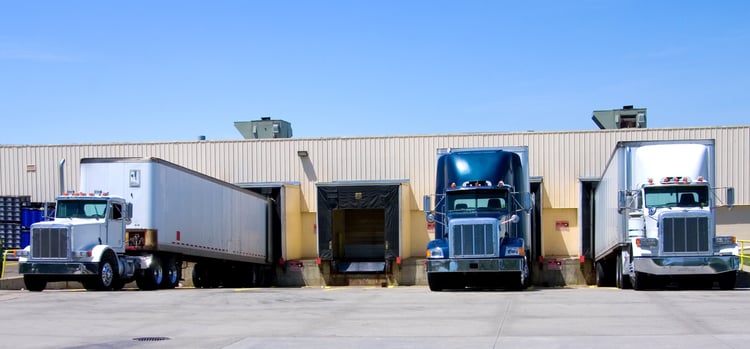
Vehicle creep
Vehicle creep is a back-and-forth rocking motion that can occur if a truck moves during loading or unloading. This unexpected movement can leave employees stepping out onto open air and falling, cause ramps to fall off while moving heavy pallets, or crush an employee’s body part between the trailer and the loading dock, creating a serious safety hazard.
Vehicle or trailer restraint
Vehicle or trailer restraint prevents dangerous vehicle creep by locking the trailer in place with restraints that prevent any back-and-forth rocking motions.
Working range
The working range is the horizontal and vertical range of positions that can be engaged by a vehicle or trailer restraint.
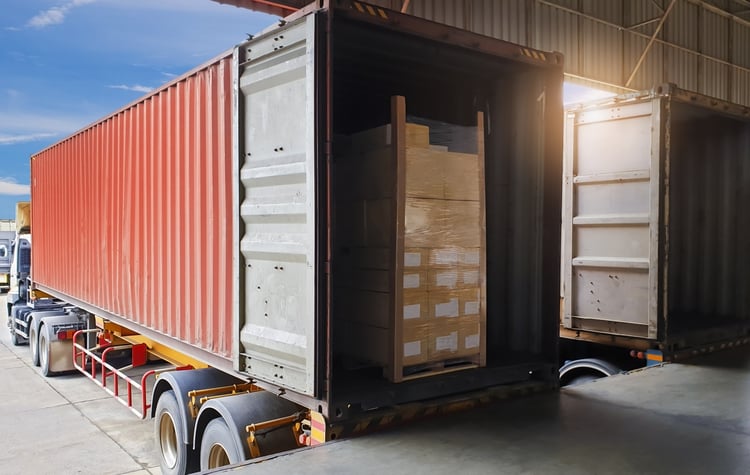
Enjoy a More Productive & Secure Working Environment
At SSE, we offer the best-in-class products and equipment you need to keep operations in your dock and door area smooth, efficient, and safe for your loading dock operating personnel. We also conduct safety surveys and comprehensive emergency and routine repairs to ensure your loading dock area is fully functional long-term.
If you’re ready to leverage our products and services to transform your loading dock into a more productive and secure working environment, reach out to one of our experts now!

